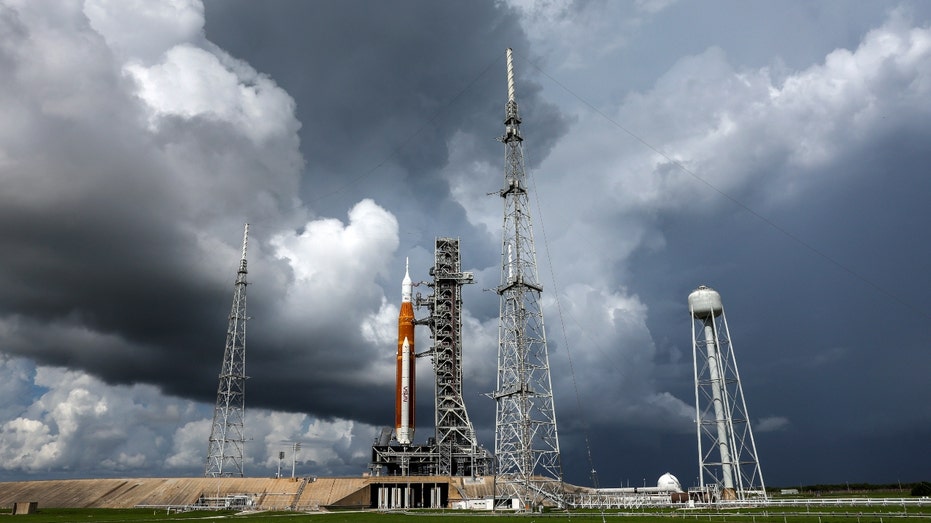Artemis rocket launch delayed until Sept. 27 at earliest
Previous launch attempts have been stymied by leaks
FOX Business Flash top headlines for September 13
Check out what's clicking on FoxBusiness.com
The targeted launch date for NASA's Artemis I Space Launch System rocket and the Orion spacecraft has been pushed to Sept. 27 at the earliest.
In a Monday blog post, the agency said it would conduct its cryogenic tanking demonstration test no sooner than Sept. 21 following "careful consideration of multiple logistical topics."
Those topics include the additional value of having more time to prepare; the dates also allow managers to ensure teams have enough rest and enable them to replenish supplies of cryogenic propellants.
The 70-minute launch window opens at 11:37 a.m. EDT and the projected landing would be on Nov. 5.
NASA ARTEMIS ROCKET GETS TENTATIVE LAUNCH DATES

NASA's Artemis I rocket sits on launch pad 39-B at Kennedy Space Center on Sept. 2, 2022 in Cape Canaveral, Florida. (Kevin Dietsch/Getty Images / Getty Images)
A potential backup opportunity on Oct. 2 is under review. The 109-minute launch window on that date opens at 2:52 p.m. EDT and it would land on Nov. 11.
Parallel to the Artemis planning, NASA and SpaceX continue to target no earlier than 12:45 p.m. EDT on Oct. 3 for the launch of the agency's Crew-5 mission to the space station.
Both launch schedules will continue to be assessed in the coming weeks.

Artemis I launch was scrubbed at Kennedy Space Center on Sept. 6, 2022, in Cape Canaveral, Florida. (Joe Raedle/Getty Images / Getty Images)
This comes after previous launch attempts from Florida's Kennedy Space Center were hindered by leaks.
CLICK HERE TO READ MORE ON FOX BUSINESS
Over the weekend, Artemis teams completed repair work to the area of a hydrogen leak.
They reconnected the plates on the quick disconnect for the liquid hydrogen fuel feed line where two seals were replaced last week.

NASA's Artemis 1 moon rocket, seen from Titusville, Florida, at the Kennedy Space Center on Sept. 2, 2022. (Paul Hennessy/Anadolu Agency via Getty Images / Getty Images)
This week, teams are conducting tests at ambient conditions to ensure there is a tight bond between the two plates before testing again during the cryogenic demonstration.
The demonstration will allow teams to confirm the hydrogen leak has been repaired, as well as to evaluate updated propellant loading procedures designed to reduce thermal and pressure-related stress on the system, conduct a kick-start bleed test and evaluate pre-pressurization procedures.
GET FOX BUSINESS ON THE GO BY CLICKING HERE
NASA said it was continuing to respect the Eastern Range’s process for review of the agency’s request for an extension of the current testing requirement for the flight termination system.





















